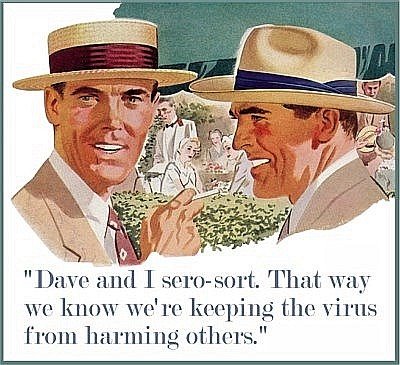
Toronto AIDS Confab: SF Rates Plateau Due to Serosorting
An important abstract from San Francisco was presented today at the Toronto AIDS conference showing new HIV infections reached a plateau years ago, after peaking seven years back in 1999, and that the reason for this good news is probably due to serosorting practices developed by sexually active gay men, both HIV poz and negative. To me, it says much about the HIV prevention industry, which does not promote in any way serosorting as an effective means to stop HIV, that serosorting plays a crucial role in preventing and controlling new infections.
The full abstract:
HIV serosorting? Increases in sexually transmitted infections and risk behavior without concurrent increase in HIV incidence among men who have sex with men in San Francisco
Background: Sexually transmitted infections (STI) and unprotected anal intercourse (UAI) have been increasing among men who have sex with men (MSM) in San Francisco. However, HIV incidence has stabilized. We evaluated recent trends in sexual risk behavior, STI, and HIV incidence to assess whether increases in HIV serosorting (i.e., selective unprotected sex with partners of the same HIV serostatus) may contribute to preventing further expansion of the epidemic.
Methods: The study applies an ecological approach and follows the principles of Second Generation HIV Surveillance. Temporal trends in biological and behavioral measures were assessed using multiple pre-existing data sources: STI case reporting, prevention outreach programmatic data, and voluntary HIV counseling and testing data.
Results: Reported STI cases rose from 1998 through 2003. Rectal gonorrhea cases increased from 158 to 311 while early syphilis increased from 8 to 314. UAI increased overall from 1998 to 2004 (p<0.001) in community-based surveys; however, UAI with partners of unknown HIV serostatus decreased overall (p<0.001) among HIV-negative MSM, and among HIV-positive MSM declined from 30.7% in 2001 to a low of 21.0% in 2004 (p<0.001). UAI (any, receptive, insertive) with a known HIV-positive partner decreased overall from 1998 to 2004 (p<0.001) among MSM at HIV testing programs. HIV incidence using the serological testing algorithm for recent HIV seroconversion (STARHS) peaked in 1999 at anonymous testing sites (4.1%) and the STI clinic confidential testing program (4.8%), with rates leveling off through 2004.
Conclusions: HIV incidence among MSM appears to have stabilized at a plateau following several years of resurgence. Increases in the selection of sexual partners of concordant HIV serostatus may be contributing to the stabilization of the epidemic. However, current incidence rates of STI and HIV remain high. Moreover, a strategy of risk reduction by HIV serosorting can be severely limited by imperfect knowledge of one´s own and one´s partners´ serostatus.
Back in May, the Bay Area Reporter ran an excellent piece by Matthew Bajko about serosorting and how the city was about to get the nation's first media campaign about the practice.
From Bajko's article:
The San Francisco AIDS Foundation, however, is about to become the first AIDS agency in the country to discuss serosorting in a social marketing campaign. The agency plans to launch advertisements and a Web site this June that will not only discuss serosorting but other controversial methods like "negotiated safety" or seropositioning – where a negative man will only top or a positive man will only bottom during sex.
Well, two months later the AIDS foundation has not launched its serosorting campaign, but it may not matter much that this appears to be an empty promise from the foundation, because gay men are engaging in serosorting sexual practices that do much to halt new HIV infections, all without any help from HIV prevention groups or the Centers for Disease Control and Prevention.

No comments:
Post a Comment